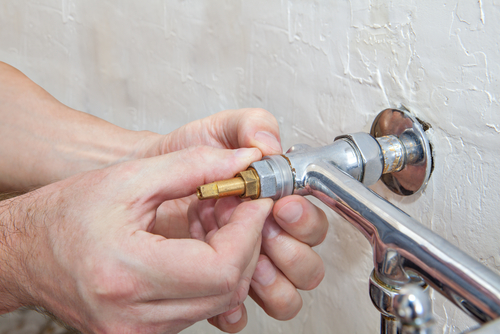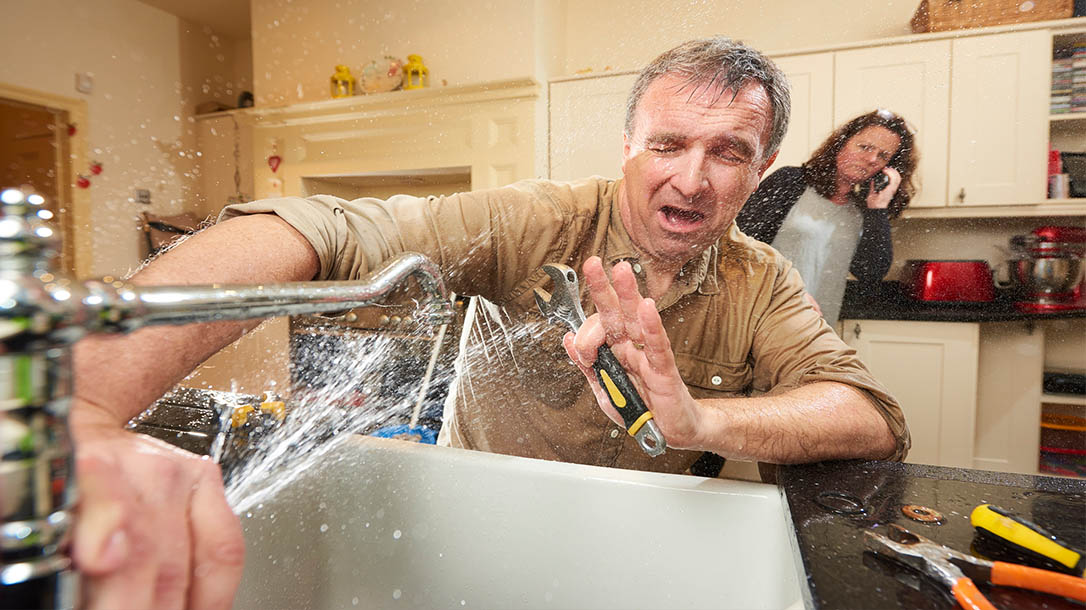When It's Crucial to Correct a Faulty Faucet
When It's Crucial to Correct a Faulty Faucet
Blog Article
We have come across this great article relating to Water Dripping from Faucet: Why and How to Fix listed below on the web and concluded it made perfect sense to share it with you on this page.

Dripping faucets may seem like a minor trouble, yet their impact exceeds simply the inconvenience of the sound. From drainage to sustaining unneeded monetary prices and health risks, disregarding a dripping tap can result in various repercussions. In this write-up, we'll explore why it's critical to address this common family problem without delay and effectively.
Wastage of Water
Environmental Impact
Dripping faucets contribute substantially to water waste. According to the Epa (EPA), a solitary faucet trickling at one drip per second can waste greater than 3,000 gallons of water annually. This not just stress water resources but additionally impacts ecosystems and wild animals depending on them.
Financial Costs
Raised Water Costs
Beyond the environmental impact, trickling faucets can pump up water expenses significantly. The accumulated wastage over time translates into higher energy expenditures, which can have been stayed clear of with prompt fixings.
Possible Home Damage
Moreover, long term leaking can cause harm to components and surfaces surrounding the faucet. Water accumulation can create discoloration, rust, and even architectural concerns if left ignored, resulting in added repair service costs.
Wellness Issues
Mold And Mildew and Mildew Growth
The continuous existence of moisture from a dripping faucet creates an ideal atmosphere for mold and mold development. These fungis not only endanger interior air quality yet likewise position health and wellness risks, particularly for people with respiratory conditions or allergies.
Waterborne Illness
Stagnant water in dripping faucets can end up being a breeding place for microorganisms and other pathogens, increasing the danger of waterborne diseases. Pollutants such as Legionella microorganisms prosper in stationary water, potentially bring about major health problems when consumed or inhaled.
Do it yourself vs. Specialist Repair work
Pros and Cons of DIY Repair Service
While some might try to deal with a dripping faucet themselves, DIY repair work include their very own collection of difficulties. Without appropriate understanding and tools, DIY attempts can exacerbate the issue or lead to insufficient repair services, extending the issue.
Benefits of Hiring a Specialist Plumber
Working with an expert plumber guarantees that the underlying cause of the trickling faucet is addressed properly. Plumbing technicians possess the proficiency and tools to diagnose and fix faucet problems effectively, saving time and reducing the risk of more damages.
Step-by-Step Guide to Dealing With a Dripping Faucet
Devices Required
Before trying to fix a leaking faucet, collect the necessary tools, including an adjustable wrench, screwdrivers, replacement parts (such as washers or cartridges), and plumber's tape.
Typical Tap Issues and Their Solutions
Recognize the kind of tap and the certain issue causing the drip. Typical problems consist of worn-out washing machines, rusty valve seats, or malfunctioning O-rings. Refer to maker directions or on-line tutorials for detailed assistance on repair work.
Preventive Measures
Normal Upkeep Tips
To prevent leaking taps, perform regular upkeep such as cleansing aerators, examining for leakages, and replacing damaged parts promptly. In addition, think about mounting water-saving devices or updating to extra efficient components.
Importance of Prompt Fixes
Dealing with trickling faucets as soon as they're observed protects against further water waste and possible damages, inevitably saving both water and money over time.
Effect On Building Value
Understanding of Well-Maintained Property
Preserving a home in good condition, including attending to upkeep concerns like trickling taps, boosts its perceived value and desirability among potential buyers or tenants.
Impact on Resale Value
Residences with well-maintained plumbing components, including taps, command greater resale worths in the real estate market. Resolving leaking faucets can add to a positive perception throughout building assessments and negotiations.
Environmental Duty
Individual Contribution to Preservation
Taking duty for fixing leaking taps straightens with broader initiatives towards water conservation and environmental sustainability. Every individual's actions collectively make a considerable effect on maintaining priceless sources.
Lasting Living Practices
By prioritizing prompt repair work and adopting water-saving habits, individuals add to lasting living methods that benefit both present and future generations.
Conclusion
Resolving a trickling faucet goes beyond simple benefit; it's a vital step towards conserving water, reducing monetary costs, and guarding health and wellness and residential or commercial property. Whether with do it yourself repair work or specialist support, doing something about it to repair trickling faucets is a little yet impactful way to advertise liable stewardship of sources and add to a much healthier, more lasting future.
Why Are My Faucets Dripping (And Can I Fix it Myself)?
Causes of a Dripping or Leaking Faucet
Whether you’re hearing drops of water falling and hitting a sink, or noticing water ooze out from the base of the spout, you shouldn’t ignore a dripping or leaking faucet. And, the good news is, sometimes you can fix the problem yourself.
In this article, we’ll review a few common causes of dripping and leaky. We’ll also walk you through some basic ways to find the problem and handle it without calling anyone — and let you know when to call in a pro.
But, no matter what the cause, or whether you can handle it on your own, the sooner you address it, the better.
Each drip may be a tiny amount of water. But, they all add up quickly. According to the U.S. Geological Survey, one faucet losing one drop every 20 seconds — five a minute — wastes around a liter of water every day, and 173 gallons a year.
Add in more than one in your house, and it’s a lot of water to waste. So, we’ll help you get to the bottom of things quickly.
Four Reasons Your Faucet May Be Dripping
Aerator is Damaged or Unseated Valve Seat is Corroded O Ring is Loose or Worn Out Part of the Assembly is Loose Aerator is Damaged or Unseated
If you unscrew the end of your faucet, you’ll find the aerator. It’s the little stem piece with a screen on it that shuts off the water circulation.
If it’s damaged, or if it’s not sitting right, it will allow water to pass through.
Valve Seat is Corroded
Next is the valve seat, which is connected to the washer. If the washer wasn’t in place correctly, then it could have ground against the seat. Over time, this damages the valve seat.
The problem could also be corrosion: Over time, the part has worn out, and it’s now allowing water to pass through.
O Ring is Loose or Worn Out
Since the o ring is only a small rubber gasket, it’s a common reason why the faucet is dripping. You’ll find it at the base of the faucet, and it’s there to keep water from coming out where it’s not supposed to.
However, it’s common for the o ring to wear out over time. When it does, you’ll notice a drip.
Part of the Assembly is Loose
So far, we’ve looked at a few small, specific parts. But, the problem could be anywhere in the assembly if something’s out of place.
Even if a part isn’t damaged, over time, it may have become loose or dislodged. It could be the parts we mentioned, or the aerator at the tip of the faucet, the stem itself,
Can I Fix a Leaky Faucet Myself?
Depending on the problem, and how handy you are, there’s a chance you can fix a leaky faucet without calling a professional. But, you do run the risk of making the problem worse.
If it’s a small drip, you can certainly try a few troubleshooting tactics. We’ll walk you through them in a moment.
But, no matter what, your first step should be shutting off the water coming into the faucet. You should find a shutoff valve under the sink on the pipes leading to it. Turn each one clockwise until they close tightly.
Next, make sure you have the right tools for whatever you’re attempting. It’s tempting to make do with what you have. But, you need the right ones for a reason: You’re often dealing with small parts that can break if you handle them carelessly.
If you’re feeling confident, here are some places to start.
Items Near the Tip of the Faucet
A few of the parts we mentioned — particularly the valve seat and washer — are located at the tip of the faucet where the water comes out. They’re easy to access, making it a good place to start.
Check the O Ring
To check the o ring, you’ll need to take off the spout at the base. It’s easiest on kitchen sinks with long spouts, versus the smaller, bulkier base on most bathroom sinks.
Either way, this can be tricky, so do it carefully and don’t force anything. If it’s not coming right off, you’re much better off calling in a pro than possibly breaking something.
For a kitchen sink, there’s usually a nut or coupling assembly at the base of the spout. These often slide off easily without using any tools.
Once you’ve disassembled those parts, gently but forcefully twist off the spout.
Then, you can see the o rings. There should be two of the rubber gaskets on the base. If they look worn or damaged, replace them, and see if that solves the problem.

As a serious reader about Why Is It Important To Fix Your Leaking Tap/Faucet?, I think sharing that segment was really helpful. Liked our write up? Please share it. Help other people locate it. We enjoy your readership.
Report this page